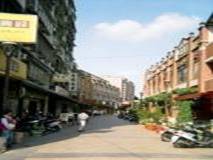December 2007 London Meeting
At our last London meeting before Christmas, we were treated to two excellent talks.
David Waldman told us about his trip to visit the Nandi of the Rift Valley in Kenya. Inspired to visit by athletes such as Kip Keno, David wanted to discover why this pocket of Kenya has produced over 50% of the long distance running world championship and Olympic medal winners since the 1960’s.
David discovered that running is not just a hobby or a sport, but an occupation, a possible escape from the poverty where those not gifted to run do jobs like breaking rocks or selling tomatos for $3 a day. Despite having no facilities at all, David found whole families who can all run world class marathon times. The runners do a 20km run in the mornings and another 10Km at night, their gym if you can call it that is a rock attached to either end of a metal bar. “Train hard, win easy” is their motto.
Those that make it to Europe can make more money from one race than the average Kenyan makes in a lifetime. They return to buy some land, build a house and farm, though once their running days are over many unfortunately descend into alcoholism. David had set out with the idea that there is a genetic reason for the running dominance, without doubt the altitude helps, but from early on they are out rounding up their cattle, they are doing the sheepdogs job.
And when a neighbouring village come to steal cattle they literally run after them with bows and arrows. There seems to be some degree of natural selection too, those that can run get the girls and produce more runners, the rest remain on the shelf.
Our second speaker was Jo Huxster, who should have been joined by Antonia Bolingbroke-Kent, who was ill. “Tuk to the road” was the story of Jo and Ants 12,500 mile, 12 countries in 14 week trip by Tuk Tuk from Bangkok to Brighton in aid of the Charity MIND.
Anyone who has taken a ride in one of these vehicles around an asian city will know it can be a bum numbing experience. Jo got the idea a couple of years previously while on holiday in Thailand.This was not going to be any old Tuk Tuk though, this was a custom built bright pink Tuk Tuk, which they christened Ting Tong, which actually means “crazy” in Thai.
They had decided on the northern route, via Laos, China, Kazakhstan, Russia, Ukraine, Poland, Germany and Belgium. So on 28th May 2006 they set off from Bangkok, crossing the Mekong into Laos, once the paperowrk issues had been resolved. Once in China a slight hitch occured when they discovered they were not allowed on the nice fast dual carriageways, instead they had to use what amounted to cart tracks which ran frustratingly alongside the main roads.
They had to race across China, as they only had a set amount of visa time, Jo particularly enjoyed the drive across the Gobi Desert. They had been fretting about the Kazakh border, but two girls in a pink Tuk tuk got taken to the front of the queue and they were soon crossing the green Kazakh countryside, one day they had to cover over 700Km as there was nothing inbetween. On their map the Kazakh M36 road to Russia was a nice fat red line, however the reality turned out to be one a track dirt road through fields.
The Russian police broke all records for pulling them over, they were stopped 35 times in 2 weeks! Ting Tong stood up to its journey quite well, however the shock absorbers that had taken 10 Chinese all night to repair broke again, but luckily a Ukranian mechanic was able to do the job on his own in a couple of hours, so they were soon on their way again. Once they crossed into the EU it was a case of pedal to the metal and head home, via the Channel Tunnel, arriving in Brighton on 3rd September. Globies raised in excess of £100 in a collection for MIND at the meeting.
If you want to learn more about Jo’s trip, buy the book or donate to the charity you can visit their website http://www.tuktotheroad.co.uk
By Padmassana
London meetings are held at The Church of Scotland, Crown Court, behind the Fortune Theatre in Covent Garden at 2.30pm the first Saturday of each month. There is no London meeting in August, but we will be back in September. For more information, you can contact the Globetrotters Info line on (+44) 020 8674 6229, or visit the website: www.globetrotters.co.uk



 Regular contributor Mac had some thoughts on hearing that The Ant is stepping into the Beetle’s very large shoes…
Regular contributor Mac had some thoughts on hearing that The Ant is stepping into the Beetle’s very large shoes… 